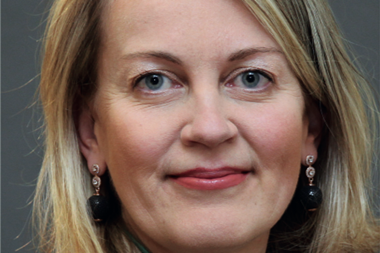German employees are wary of deferred compensation as a form of occupational pension, although this type of arrangement has gained traction with corporate companies.
According to a survey conducted by Willis Towers Watson (WTW), 87% of companies in Germany have established rules for converting employees’ remunerations into pension entitlements, so-called deferred compensation.
But only in 35% of the companies surveyed over half of the employees make use of this form of occupational pension.
It is thought that the low take-up of deferred compensation in companies is caused by the fact that employees are not aware of their pension needs or are sceptical of predominantly insurance-based pension offers.
The law to reinforce occupational pensions, the Betriebsrentenstärkungsgesetz (BRSG), which entered into force in 2018, has not had much success so far in boosting company pensions.
Three quarters (76%) of companies did not register any significant change in the take-up of deferred compensations as a result of the BRSG.
Occupational pension arrangements that offer guarantees, instead, continue to play a predominant role for employers and employees, thus potentially hindering the spread of social partner pensions.
WTW’s survey found that over half (53%) of companies continue to offer occupational pension products with guarantees as a form of investment for deferred compensation.
The research also found that 66% of employees consider security, which is commonly associated with guarantees, more important for old-age provisions than the chances of achieving returns through investments.
The findings also lay bare the underlying problems relating to an acceleration of the adoption of the social partner pension models, a defined contribution (DC)-type of arrangement that does not fully guarantee pension benefits while opening up new opportunities for returns in the current low interest rate environment.
Pension providers continue to adjust to this low interest rate environment by marketing new pension products structured on opportunities generated from investing in contributions and cutting promises of guarantees, it said.
“Many companies suspect that employees have little confidence in such products after changes [made] to insurance offerings in a short [period of] time,” said Heiko Gradehandt, WTW’s senior director retirement.
Low interest rates will continue to push pension providers to find attractive solutions to secure old-age provisions with an eye on equity markets.
“Companies and employees can therefore not avoid dealing with these products,” Gradehandt said, adding that, however, employees will only sign up for pension arrangements if they understand them.
“Coherent communication concepts are rarely implemented,” he said.
Industry executives are discussing ways to accelerate the take up of new models that move away from classing guarantees.
Richard Nicka, vice president of BASF pension fund, recently put forward the idea of conducting “direct talks with employer representatives” at company level to explain the benefit of the social partner pensions.
The social partner pension model
The social partner pension model, or Sozialpartnermodell (SPM) in German, is a DC pension model. This form of occupational pension arrangement, also dubbed Nahles Rente from the name of the former leader of the Social Democratic Party (SPD) and labour minister Andrea Nahles, was introduced with the law to reinforce occupational pensions, BRSG, in 2018.
Under the framework, employer representatives and employees negotiate and finalise collective bargaining agreements to pay pension benefits.
The SPM waives guarantees on benefits and cuts employers’ liability. The employer is required to pay ‘promised contributions’ (“pay and forget”).
The employer is also required to pay 15% of the sum used for deferred compensations as an additional contribution, if contributions under the SPM are financed via deferred compensations and the employer saves social security contributions as a result.
The employer’s liability is transferred to an external entity, either a Pensionskasse, a Pensionsfonds or a direct insurance policy (Direktversicherung).
A separate stock of assets for investments, or security assets, are carved out under the social partner model and separated from the remaining assets of a pension institution.


























No comments yet